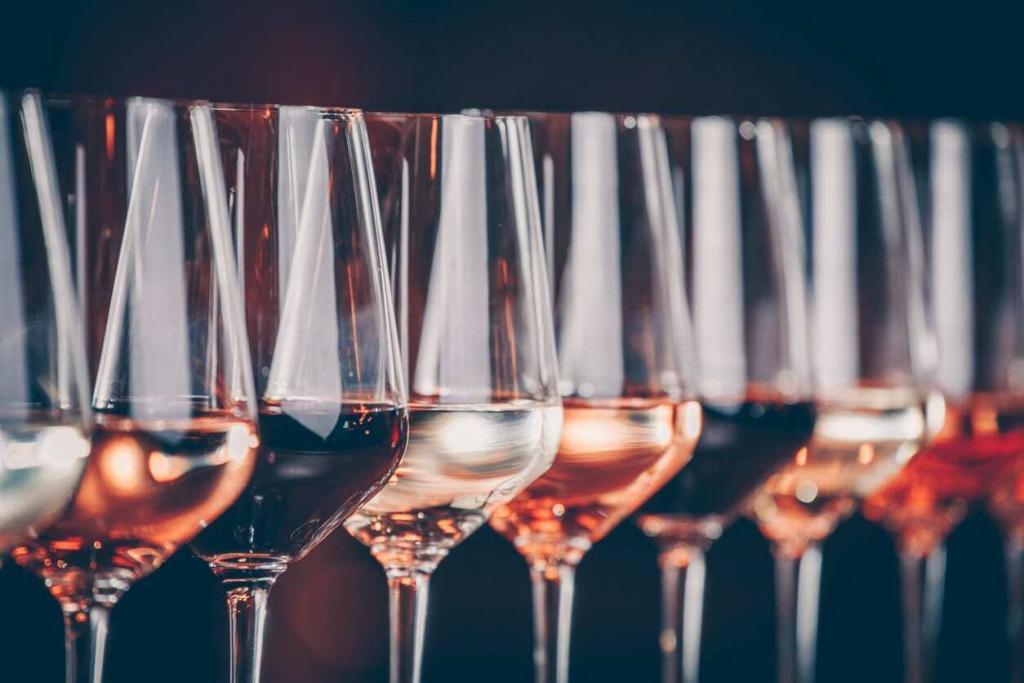
As you sit under the stars, sipping a glass of your favorite wine, do you find yourself pondering some of the greatest questions in the universe? Questions like whether you should decant your wine, how to re-cork the bottle, and what in the world are ‘wine legs’? We’ve rounded up the answers to frequently asked questions revolving around one of Earth’s most beloved liquids. Sit down and get ready to sip in our Wine Q&A.
Answers to Common Wine Questions – Carpe Travel’s Wine Q&A.
These are the questions that pop up again and again whenever wines are served or even discussed.
1. How many glasses of wine are in a bottle?
There’s an average of around five glasses of wine per bottle. If you’re planning a party, two bottles for every five people will allow each guest to enjoy two glasses of wine over the course of the party. Of course, an extra bottle or two will never go amiss!
2. How many calories are in a glass of red wine?
Depending upon how sweet it is, an average serving of wine (~175ml) has about 150 calories. That doesn’t sound like much, but it can really start to add up over the course of an evening! Dry red wines contain the least amount of sugar but the most calories since alcohol has 3 more calories per gram than sugar does.
3. Which type of wine has the most alcohol?
Dry red wines generally have the highest alcohol content, at 13% or more. Most white wines are somewhere in the middle, while sweet dessert wines have the least amount of alcohol (usually under 10.5% by volume). That’s because sugar turns to alcohol during the fermentation process. The drier the wine, the more sugar that’s been converted to alcohol.
4. What’s a good all-around wine glass shape?
Choose a large glass with a generous bowl and a long stem that curves slightly inward at the base of the bowl. A good wine glass should be made from thin, clear glass so you can enjoy the swirl. Learn more about the different shapes of wine glasses.
5. How long will a bottle of wine last?
This is one of the hardest wine questions to answer because it depends on the type of grapes used, the vintage, and how the wine was produced and bottled. Your best chance of getting a correct answer is to ask about a specific bottle. The best person to ask is the wine producer, a sommelier, or a knowledgeable wine clerk.
In general, an opened bottle of white wine should last through a couple of evenings of sipping. Red wines will change character much faster. That red you’re sipping tonight probably won’t taste the same as it did last night. Though if it’s young and tannic, a couple of days of mellowing probably won’t hurt! Dessert wines last much longer — stretching them out for a week or two is usually no problem.
6. How do I re-cork (or reseal) a wine bottle?
If the bottle is almost full, simply replace the cork (right side up!) or screw cap and store the wine in the ‘fridge. Unfortunately, the more air space in the bottle, the faster the wine will oxidize. Another option is to purchase a wine pump, which lets you pump air out of the bottle before sealing it. These get mixed reviews on their effectiveness, so you may want to try a couple of different types to see which works best for you.
7. Do I need to decant my wine?
Well, that depends… If there’s a lot of sediment in the bottle, definitely! Otherwise, pour yourself a glass, give it a good swirl, then taste it and see. If you can taste the fruitiness, don’t decant or you could lose some of that delicate fruitiness to the air.
8. At what temperature should I store my red wine?
Store red wines at cool room temperatures. Think cool cellar rather than hot attic. When the advice to ‘store reds at room temperature’ was first given, homes were much different. Those homes’ average 50-60° room temps weren’t anything like today’s centrally-heated rooms!
9.Why is wine stored on its side?
It doesn’t need to be if you’ll drink it within a week or two. However, long-term wine storage requires keeping the cork moist. Not only are dried-out corks difficult to remove, but they allow the wine to develop an unpleasant mustiness. Not a flavor you’re looking for in wine!
10.What are tannins?
Have you ever eaten a grape with seeds inside? That bitterness and bone dry sensation in your mouth afterward were thanks to the tannins in those grape seeds. Tannins are found in grape seeds, skins, and stems, along with milder tannins found in oak aging barrels. White wines aren’t generally as high in tannins as red wines since the tannin-rich grape skins aren’t allowed to soak in the juice.
11.What are sulfites?
All grapes contain natural levels of sulfur. The sulfites that result are a natural byproduct of winemaking and every wine contains them. Many wines also contain added sulfites. They act as preservatives to help slow down the chemical reactions that cause wines to go bad.
12. Wines with the most sulfites:
- Lower acid wines need more sulfites to keep them shelf-stable.
- White wines need more sulfites than reds.
- Sweet wines need more sulfites than dry wines in order to prevent that extra sugar from triggering a secondary fermentation.
13.What is an organic wine and what makes it special?
Organic wines are made from organic grapes. That means the grapes were grown without the use of chemical fertilizers, herbicides, fungicides, pesticides, or any other synthetic chemicals. No chemicals of any kind are allowed to touch either the soil or the grapes in order to get a coveted organic certification. Organic wines are usually free of added sulfites and other stabilizers, too. (Learn more about organic and biodymanic wines.)
14.What are ‘wine legs’?
These are the liquid residue tracks left behind on the side of your wine glass after you swirl the wine. Thinner ‘legs’ run down more quickly and indicate a lower alcohol content. Thicker, slower-moving ‘legs’ are a bit stiffer. Just like the wine’s alcohol level!
15.What’s the difference between ‘New World’ and ‘Old World’ wines?
It’s partly geographical, with New World wines hailing from North and South America, New Zealand, and Australia while Old World trace their lineage to Western Europe. However, the terms are used stylistically, too.
Old World wines are considered more restrained with a better balance, along with less alcohol, more acid, and earthier tones. New World wines are brasher, with more alcohol and fruit.
Where can I learn more about wine?
Did our Wine Q&A spark an interest to learn more? Begin by reading about wine history and culture — while sipping a relevant wine, of course! Follow an expert wine blogger, tour wineries, attend tastings (lots of tastings!), and take as many wine classes as you can. Know what flavors to expect before you taste a particular wine so you can start training your palette to detect subtle notes.
Listen, ask wine questions, and take notes whenever you can. Sign up for Carpe Travel’s email list to learn more about winemaking and wine history. Follow along with me as we tour famous winemaking regions and learn the secrets behind the vintages.
Subscribe to Sip in More of the World
Elaine Schoch is an award-winning travel writer, wine judge, American Wine Specialist and certified by the Wine & Spirit Education Trust (WSET II). At Carpe Travel she shares wine travel destination guides for ALL WINE LOVERS – from novices to experienced pros – to help them plan their wine adventures, arming them with insider tips, must-visit spots, and things to see and do beyond the vines.

